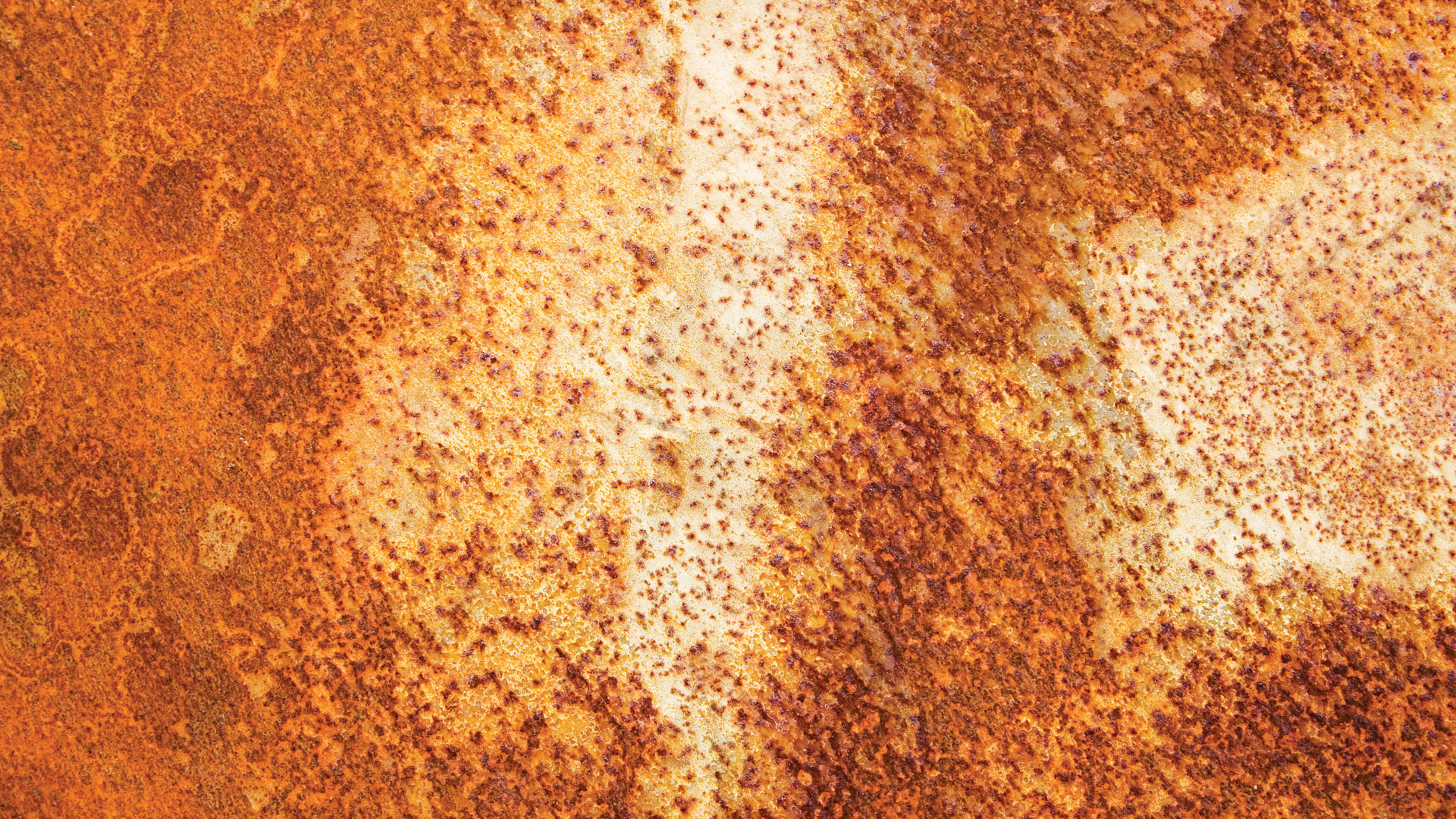

We may earn revenue from the products available on this page and participate in affiliate programs. Learn more ›
With temperatures finally falling, it’s clear that winter is on its way. With it comes snow, and in many places, that means road salt to follow. Salt, moisture, and the air around us are the key causes of rust on your vehicle. They must be stopped.
In its least damaging state, rust is merely an eyesore that devalues a vehicle. As its effect becomes progressively worse—and it always does when left unchecked—it can lead to dangerous structural damage, as well as water leaks that can bring dampness and mold into your car’s interior.
Remember, rust starts small, but it can grow. A little rust on a stone chip in the paint can turn into a larger rust spot that will eventually begin to flake, and will then become a hole. Unfortunately, steel oxidation doesn’t protect the underlying metal from further damage; the rust will continue devouring good metal until there’s nothing left.
Here are a few tips on how to keep corrosion at bay:
■ Wash your car regularly. Keeping rust-accelerating road salt from building up in the vehicle’s oxidation-prone nooks and crannies by flushing it out with water is the simplest way to avoid rust. If you opt for an automatic car wash or washing service, make sure they pay attention to the vehicle’s undercarriage. Rocker panels, inner fenders, strut towers, and rear quarters are notorious rust dens. As for the time and expense involved in regular washes, consider it as part of the cost of vehicle ownership. Paying for a few car washes now will certainly be cheaper than getting body work done later—or, if the damage is bad enough, having to purchase a new vehicle.
■ Keep the paint waxed. This repels moisture and keeps it from sitting on your car. Plus, it looks good. No-brainer.
■ Make sure drain holes are unclogged. Every body panel on a car has drain holes to prevent moisture from collecting inside. The doors typically have them along the bottom edge. Cowl panels have drain holes that usually empty water inside the fenders and out of small holes in the bottom of the quarter panels. If these get clogged with leaves or dirt, rust soon follows. Start with a hose to dislodge debris, and if you have to, dab the drain hole gently with a piece of wire or a straightened coat hanger.
■ Fix small chips in the paint. If you see bare metal, cover it. All you need is sandpaper, a paint-prep chemical that removes grease and wax, a little rust-fighting primer, and some touch-up paint. Even if it looks a tiny bit off compared with the surrounding paint, it’ll be a lot better than a rust spot or hole. I like to hit the repair areas with a bit of naval jelly (phosphoric acid) before I get to the primer and paint. This video shows the basics of how to repair paint damage, but you don’t necessarily have to paint the whole section. You can also dab at individual spots with a brush.
■ Touch up the undercoating. Cracks in your vehicle’s factory undercoating present opportunities for salt and moisture to collect. I once discovered that a crack in the wheel well of my trusty ’83 Camry had caused rust to build up along one of the body seams in the right rear strut tower. By the time I found it, a hole the size of my head had developed. No bueno. Available in spray cans from any auto parts store, undercoating is cheap and easy to apply. Just make sure you wash the undercarriage and allow it to dry before applying it.
■ Apply rust preventative chemicals. There are many options out there, but the best ones have the consistency of oil or a very light wax, and can penetrate the aforementioned nooks and crannies. I’ve been using products from Carwell—the American equivalent of a popular Canadian rust preventative called Krown—for several years with good results. School bus fleet managers in upstate New York use this stuff, and they tell me it works pretty well. It’s not cheap, and there are places where you can’t get it applied outside of upstate New York and parts of Ontario, Canada, but you can buy home applicator kits (I did) and do it yourself, instead.
■ Wash your vehicle thoroughly this spring. Imagine spending time and money on rust prevention, only to forget about washing your vehicle when the last of the road salt has yet to be washed away. Not that New York City motorists serve as a good example of how to take good care of vehicles, but many of them will drive cars covered with road salt dust until the first April rains wash it away. This, I suppose, is why so many of them drive rusty cars and trucks.
